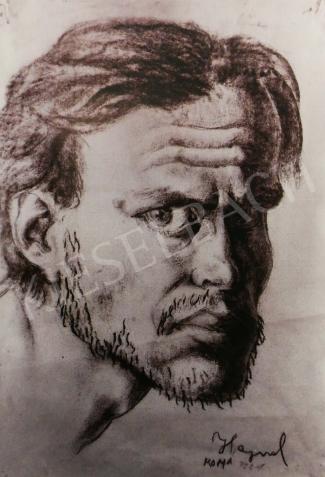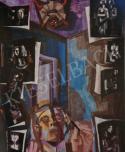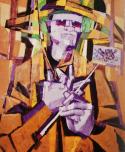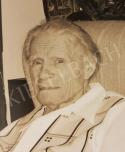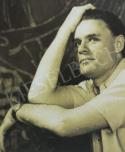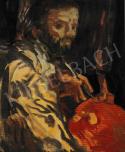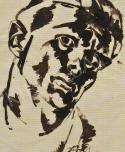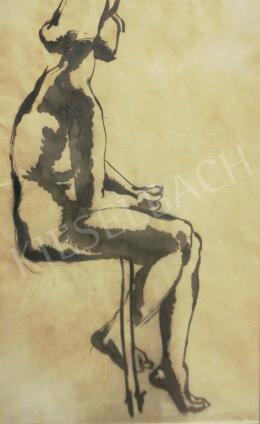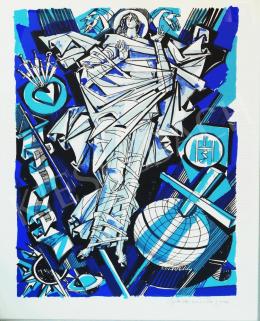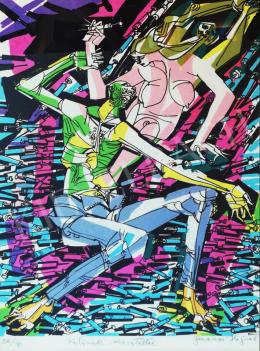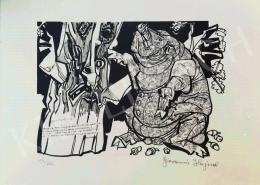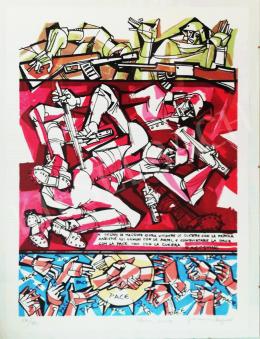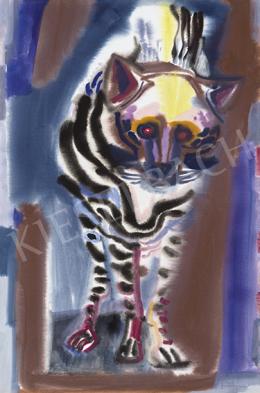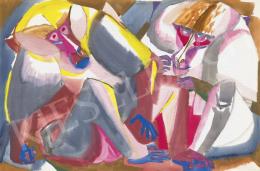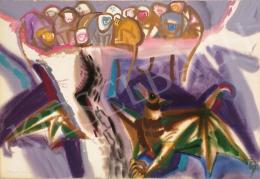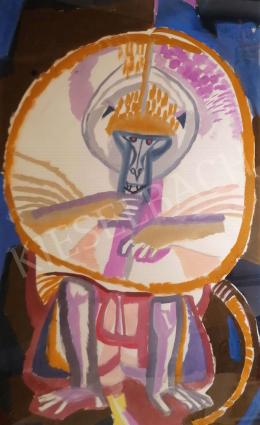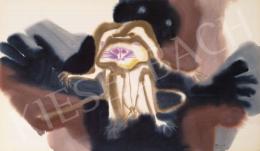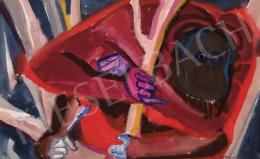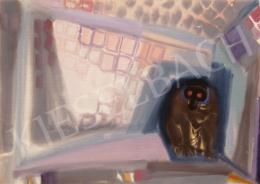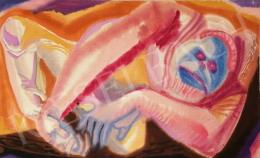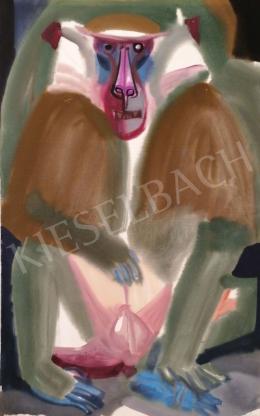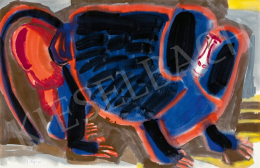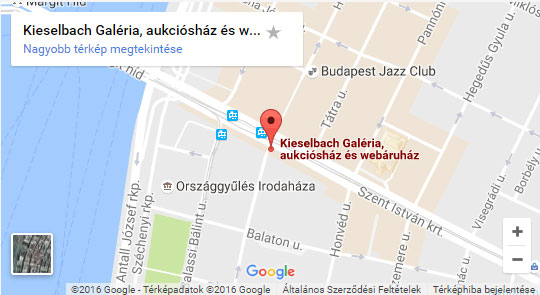Hajnal, János Budapest, 1913 - 2010, Róma
Painter. Born in Budapest in 1913. Studied in 1929-31 at Kecskemét Art Colony, mentored by Imre Révész and Gábor Imre, where he had in 1931 his first exhibition. In the ’30 frequently travelled to Italy (twice), Germany and Sweden, spending one year each at the Art Academy in Rome, Stockholm and Frankfurt, while actively participating at various exhibits in Hungary.
In 1939, back from Frankfurt, studied at the Hungarian National Academy of Fine Arts mentored by Vilmos Aba-Novak and Istvan Szönyi, later become until 1944 Assistant Lecturer in Szeged. In parallel, worked both on its own and as an assistant to Vilmos Aba-Novak and participated to several exhibitions, receiving numerous prizes, including in 1944 the Bertelan Székely Award.
After 1945 resumed his activity as painter, with several exhibitions in museums and galleries, as illustrator for various periodicals (Budapest, Szabadság, Csillag, etc.), created a decoration for the Fészek Artist’s Club (1947) and a large painted panel for the Goldberger Pavilion at the Budapest International Fair (1948).
He moved to Italy in 1948 and this event deeply marked his artistic life: by one side a casual encounter opened the doors to large dimension commissions from the Church, the Italian Government and a number of private collectors in Italy and abroad, on the other side allowed him to further develop his interests in experimenting new ways of expression and techniques.
Commissions covered works from as big as hundreds of square meters glass windows and mosaics, for which he became one of the most worldwide acclaimed authors, to as little as stamps. As a curiosity, he authored more than 4.000 square meters of glass windows and mosaics
Among the most prestigious were the Milan Duomo, Basilica of S. Maria Maggiore in Rome, the Aula delle Udienze (Aula Nervi) in Vatican City, Palma de Majorca cathedral (Spain), Hartford cathedral (Connecticut, USA), S. Paulo cathedral (Brazil) etc.
Beside commissions, he had a continuous, vast production of paintings and explored different techniques, such as batik, collages, mixed materials, etc.
During his life never stopped to produce drawings, etchings, serigraphs, witnessed by a countless number of illustrations, e.g. J. Swift’s “Gulliver’s Travels”, Dante’s “Divina Commedia”, books and poetries by several authors, nude studios and much more.
The very first Italian exhibitions in Capri 1948 and in Rome 1950 where fully dedicated to the representation of animals, a subject very often present in his works and used later also in the great stained-glass windows. His works have been regularly presented in personal or collective exhibitions in Italy and abroad.
His paintings are present in prestigious Museums, among which the Nemzeti Galeria and the Kiscelli Museum in Budapest or the Vatican Museum’s Modern Art Collection in Rome can be cited, as well as in several private collection in Hungary, Italy, Switzerland, USA, Brazil, etc.
State decorations
In 1958 he received Italian citizenship “For Artistic Achievements”, in 1992 the “Middle Cross for the Order of Merit” of the Republic of Hungary, in 19994 the “Honorary Doctorate in Fine Arts” from the Hungarian Academy of Fine Arts, in 2002 the “Order of Merit” of the Italian Republic.
He passed his way in Rome in 2010





